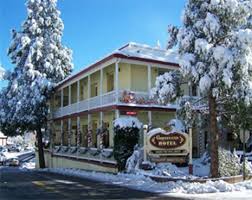.jpg) |
| Goya's "Here Comes the Bogey-Man." |
Parents in almost every
country in the world have used scary tales about entities or monsters to scare
their children into behaving. These bogeymen
go by many names, some countries use several names depending upon the region or
culture.
These entities are most often
male but some are female or androgynous. They are often said to hide in the
dark--in a child’s closet or under their bed. Another common theme is they
carry a sack on their back where they place the child after they have kidnapped
them.
Parents tell these stories to
their children to make them go to sleep, eat their food, avoid dangerous areas
e.g. woods, water, etc. Regardless, the universal goal is to make their children
behave.
Some cultures no longer use
these stories but others still use this scare tactic--I write about how La Llorona
is still used today to frighten children here.
 |
| One depiction of La Llorona |
As mentioned these stories
are numerous so it would take an entire book to share them all. Instead, here
are just a few.
The Fear Dubh or black man is a Scottish tale about a malevolent entity
that haunts footpaths and forests at night. Stories about this entity were used
to scare children to stay away from exploring the woods alone.
A story told in the Alpine
region is about Krampus a demon-like
creature that only appears in the month of December. Krampus is said to collect
bad girls and boys
during the Christmas season. It is stated he hits bad
children with birch sticks.
 |
| Krampus |
The Krampus carries a sack
where he places his victims. He is especially scary for he kills and then eats
his victims.
In the Bahamas, the small man is an entity that rides on a
cart. He picks up children that are outside after sundown.
Any child taken by him is doomed to ride in this cart forever. Parents only
have to say, “rolling cart” to scare their children into behaving.
Italians tell the tale of L’uomo Nero. He is a tall ghostly man
that wears a black cloak and a black hood over his face. He has no legs.
Parents knock under the dinner table pretending someone is at the door. They
then say. “Here comes L’uomo Nero. He must know this is a child that doesn’t
want to drink his soup!”
L’uomo Nero doesn’t harm
children but it is stated he takes them to a “frightening place.” Parents sing
a lullaby that states L’uomo Nero keeps children with him for a whole month.
The Tata Duende in Belize is a small wrinkled goblin that wears a wide-brimmed hat. He has a beard, no thumbs, and backward feet. Parents state he is the
protector of the forests and animals. They warn their children if they play in the jungle at night--they will encounter the scary Tata Duende.
In Japan, The Namahage are demons that warn children
not to be lazy or cry. During the Namahage Sedo Matsuri or “Demon Mask
Festival” the villagers wear demon masks pretending to be these spirits.
 |
| A Namaphage--a Japanese Child's nightmare. |
In the United States besides
the classic bogeyman there are stories about Bloody Bones, originated in Britain, and Tommy Rawhead both told in the South. These two tales are used to
warn children not to play outside after dark.
The bogeyman in Denmark is
known as Bøhman or busseman.
This man hides under a child’s bed and grabs children when they won’t sleep.
In Greece, parents tell a similar tale to the one in Denmark. The Baboulas is said to hide under
children’s beds. Greek parents also tell other stories about this creature in
order to make their children behave.
In Spain, El Coco, El Cuco, or El Bolo is a shapeless figure or a
hairy monster that eats children who will not go to bed. Parents sing a nursery
rhyme to their children that warns El Coco will eat them if they refuse to
sleep.
El
Coco
Sleep
child, sleep now. . .
Or
else the Coco will come and eat you
The story of El Coco has also traveled to other Spanish-speaking
countries in Latin America.
In the Congo, Dongola Miso
or “Creature with Scary Eyes” is used to discourage children from staying up
past their bedtimes as well. This creature is also used to warn them not to
speak to or deal with strangers.
This all kind of takes the meaning out of “sweet dreams child…”
In Russia, children are warned that Babayka or Baba Yaga will come for them at night if they do not
behave.
Here is a Russia lullaby that reflects this.













